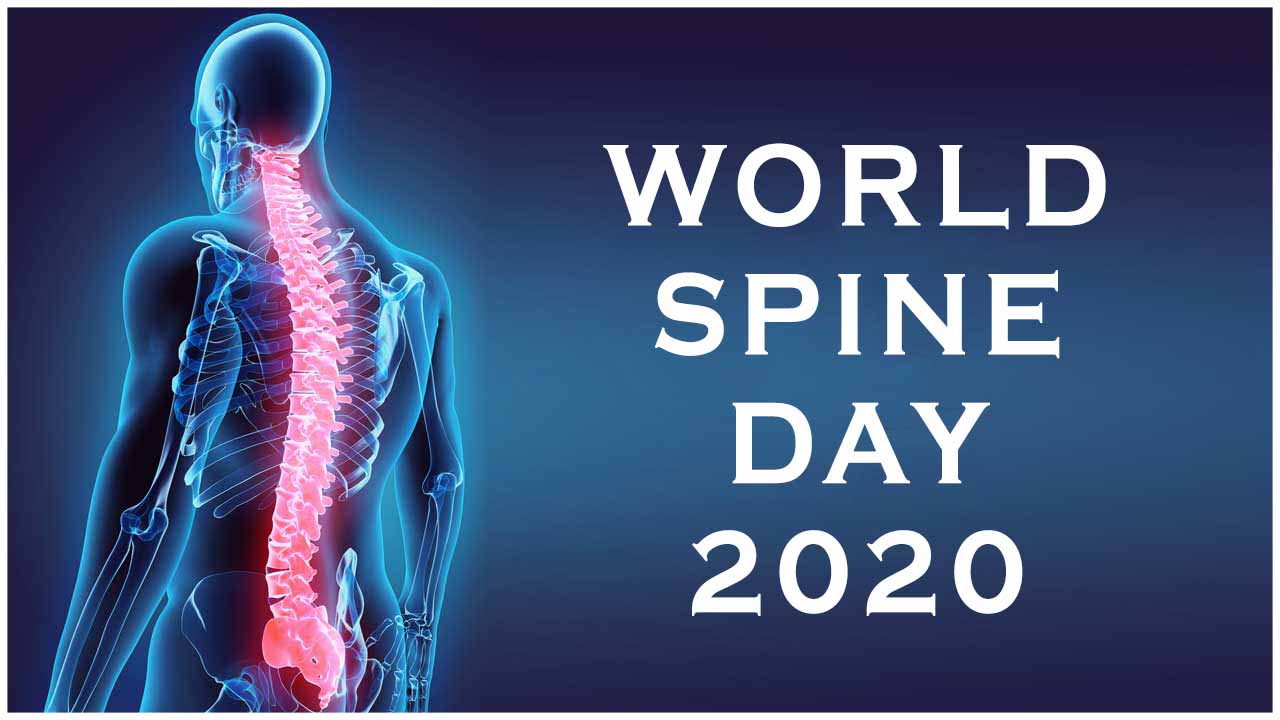Practically everyone on the planet understands back pain so when your spine hurts, everything hurts. Back pain is associated with everything from sleep problems to depression, and it can damage your quality of life as it’s the leading worldwide cause of disability with an estimated one billion people worldwide suffering from spinal pain. The spine endures a lot of wear and tear over the course of a lifetime, but knowing how to care for your back can prevent serious pain and disability. With this in mind, World Spine Day was launched and is celebrated on October 16 each year to educate the public about spine conditions and inspire them to become more active in their own health.
The World Spine Day theme for 2020 is Back on Track
With the challenges of the coronavirus pandemic affecting millions of people worldwide, lockdown restrictions have led to a lack of physical activity that has made people more susceptible to spinal pain and disability letting this year’s World Spine Day to focus on getting people back on track will help to revitalize their spines and restore spinal health and well being. With the vision of having a world of healthier spines since the spine supports you day in and day out. Taking out a day to think over what you can do to preserve your spine for the long run is a simple, yet significant investment in your health. If you learn even one way to take better care of your spine, it could contribute to less pain going forward and your spine will be thankful to you.
Populations in developing parts of the world often have no access to conventional healthcare resources to care for spinal pain and disability. Dedicated spinal health professionals do not exist in many parts of the world, helping people to self-manage their conditions is important. Even in developed countries, back pain afflicts a huge number of people, resulting in an enormous impact on the industry and the economy.
World Spine Day highlights the burden of spinal pain and disability around the world. With health professionals, exercise and rehabilitation experts, public health advocates, schoolchildren, and patients all taking part. It also highlights the importance of spinal health and well being:
Promotion of physical activity Good posture Responsible lifting Healthy working conditionsAll these features as people are encouraged to look after their spines and stay active along with effective management and prevention being the key so as to encourage people to take steps to be kind to their spines.
Here are ways you can achieve more comfort and pain relief
Let your spine really rest while sleepingWhen you lie down, all the structures in your spine that have worked hard all day finally have an opportunity to relax and be rejuvenated. To make the most of this time:
You need to have a mattress and pillows that will allow your spine to rest in a supported and comfortable way. Using a firm or medium-firm mattress also benefits people, rather than an old or soft mattress that allows the spine to sag. Placing a pillow beneath the knees will also help reduce stress on the lower back. For people who sleep on the side, try placing a pillow between the knees to keep the hips balanced. Few may also benefit from a neck pillow that supports the cervical spine well.Exercise your core to strengthen your abs and back muscles.
Your core muscles are located in your lower back and abdomen and they need to be strong and supple in order to support your spine and take the pressure off your lower back.
Too bad for most of us, our core muscles are rarely used enough during everyday activities. These muscles need to be toned through specific, targeted exercises. Speak with your doctor, physical therapist, or other health professional to learn which exercises may be appropriate for you.
Your shoes need to support your spine.
The shoes you wear play an important role in supporting your lower back whether you're walking for exercise or just to get where you're going. Proper shoes provide a supportive base that helps the spine and body remain in alignment.
Enjoy the benefits of massage.
Back massage has a number of therapeutic benefits, such as increasing blood flow, loosening tight muscles and connective tissues, and boosting feelings of relaxation. Some evidence suggests that a moderate-level massage offers more stress-relief benefits than a light-touch massage so having a massage chair in your home can be a practical and easy way to get some of the benefits.
Practice good sitting posture and limit total sitting time.
The discs in your lower spine are loaded more while sitting than standing; so long periods of sitting can create or aggravate a painful back condition. When sitting at a desk and/or looking at a computer screen, our natural tendency is to slouch and lean forward, stressing our lumbar discs even more. Choosing the right office chair and practicing good posture while seated plays important roles in supporting the natural curves of your back. It's also important to do whatever you can to avoid sitting for long periods.
Get up to stretch and walk around at least once an hour, try working at a standup desk intermittently during the day, or get up and pace around when talking on the phone.
Also, the spine is meant to move so as to stay healthy, and movement fuels the spine with healthy nutrients so make sure to follow the above points to keep the spine in the best working condition even as you grow old.

 Your core muscles are located in your lower back and abdomen and they need to be strong and supple in order to support your spine and take the pressure off your lower back.
Your core muscles are located in your lower back and abdomen and they need to be strong and supple in order to support your spine and take the pressure off your lower back.



















.jpeg)



.jpg)




.jpg)





.jpeg)

.jpg)


